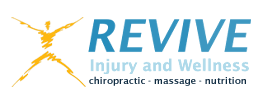Why You May Need to be Concerned with Your Child’s Spinal Health in West Linn
The spine is considered an important part of the human body in West Linn. It provides structure and movement to the body. The spine is responsible for the movement of the limbs, to standing and walking. Without the spine, there is no movement in the torso.
The spine creates a covering for the spinal column. The spinal cord is made of many nerves which connect the base of the skull to the center of the back. This connection allows signals to be sent between the brain and spinal cord which permits sensation, movement, and flexibility of the body.
Parents should be concerned with their child's spinal health to avoid spinal injuries such as misalignment of the spine and migraines. Misalignment in the spine can trigger a lot of unexpected health problems. These problems can start from pain and numbness in the limb to tiredness and irregular headache.
What are Spinal Problems in Children in West Linn?
The spinal problem in a child is usually a result of an abnormal curve of the vertebrae. This curve inflicts pressure on the spine bones triggering back pain and other health problems.
What are the different types of Spinal Problems in Children?
Spinal problems include:
- Scoliosis: This is when the spine is curved sideways making it difficult to twist or rotate without experiencing back pain and breathing problems.
- Spondylolysis: This is a pain caused by a former injury in the vertebrae. This pain is triggered by stress in the lumbar area of the spine.
- Spondylolisthesis: An ailment that arises when there is a slip in one of the vertebrae resulting in back pain and muscle stiffness.
- Kyphosis: This condition is a result of an outward curve in the vertebrae leading to a humpback.
What are the signs and symptoms of Spinal Problems in Children?
Signs and symptoms of spinal problems in children include:
- Irregular shoulders
- Irregular waist
- One hip higher than the other
- Bent pelvis
- Hunched back (kyphosis)
- Back pain
- Shoulder blade that seems more distinguished than usual
- Breathing complications
How are Spinal Problems in Children diagnosed?
Diagnostic tests may include:
- Physical exam: the spine, hips, uneven shoulders and waist curve are examined for abnormalities.
- X-ray: Uses undetected electromagnetic energy lights to show accurate images of the spine.
- CT (computed tomography) scan: Uses X-rays to show accurate picture of the spine.
- MRI (magnetic resonance imaging) scan: Uses magnetic fields and radio waves to show detail images of the spine.
- Bone scans: Uses a steady, insignificant amount of radioactive waves to show accurate pictures of the spine.
How are Spinal Problems in Children treated?
The remedy for spinal problems in your child depends on the nature of the abnormal curve. With the latest tools available, surgery is another form of correcting spinal cord injury. However, nonsurgical treatment can also be used in correct such conditions.
Nonsurgical treatments include:
- Changing activities that nat lead to injury in the spine.
- Returning the spine to proper position with braces.
- Therapy and rehabilitation to improve posture.
For more information about chiropractic care for children, contact our office at any time.
More Advice from Revive Injury
When Should I See a Chiropractor After a Car Accident?
Do you need a Chiropractor for Arm and Leg Pain?


